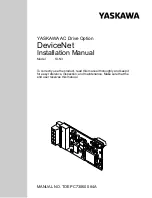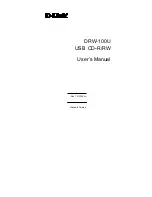
TOSHIBA SD-M1401 DVD-ROM Drive
5
Jumpers can be set in either an ON mode or OFF mode. If the jumper
covers both pins on the jumper block, it is ON. If there is no jumper or
only one of the pins is covered, the jumper is OFF. This section will
discuss the following jumper settings: SCSI ID, Parity, Termination,
Eject, Test/Audio Playback Jumper, and Power Supply.
SCSI ID
All SCSI devices attached to your computer are assigned a SCSI ID
number from 0 to 7. Your DVD-ROM’s SCSI ID must be set so that
its ID number does not conflict with any other device’s SCSI ID in your
system. In most cases your DVD-ROM will come set to SCSI ID 4. If
your DVD-ROM is the only SCSI device connected to your computer,
you should leave the jumpers as they are. If you have additional SCSI
devices (a CD-ROM, hard drive, etc.) you will be “daisy-chaining”
these devices. Each SCSI device must have a different SCSI ID. Note
that your SCSI interface card in most cases has a SCSI ID of 7. The
chart below shows the jumper settings for the eight possible ID
numbers:
Parity Jumper
The parity jumper pins should have no jumper present which sets parity
to OFF mode. In the OFF mode, the parity bit check function on the
SCSI data bus is activated which enhances data bus reliability.
Note: If your interface card does not provide “parity generation”
function, this jumper will have no effect.
ID1
ID2
ID4
SCSI-ID
0
(default)
ID1
ID2
ID4
SCSI-ID
1
ID1
ID2
ID4
SCSI-ID
2
ID1
ID2
ID4
SCSI-ID
3
ID1
ID2
ID4
SCSI-ID
4
ID1
ID2
ID4
SCSI-ID
5
ID1
ID2
ID4
SCSI-ID
6
ID1
ID2
ID4
SCSI-ID
7











































